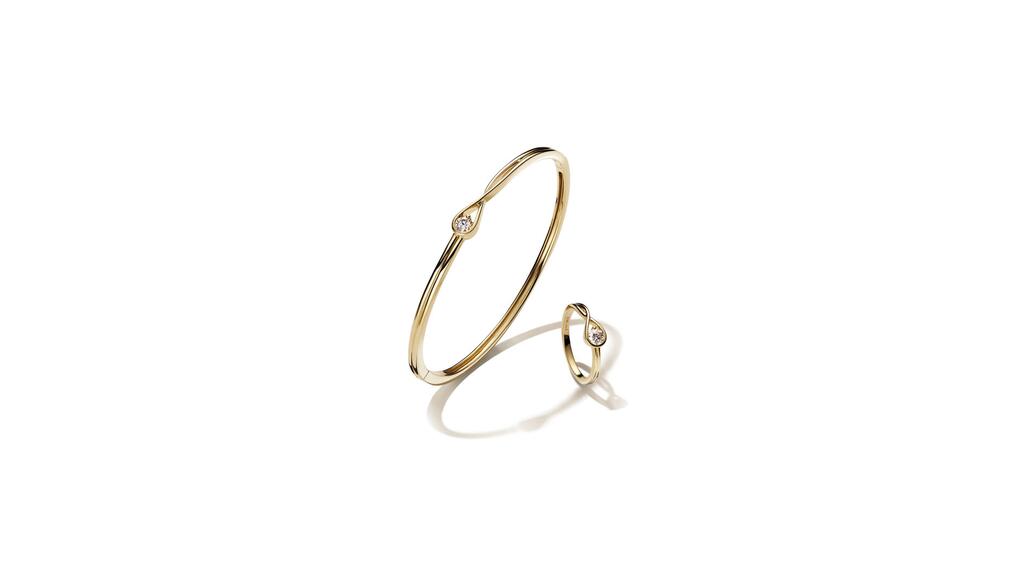Looking Ahead: 4 Factors That Could Shape Lab-Grown Diamonds’ Future
Growing supply and falling prices likely will make differentiation a necessity and a reality, according to analyst Paul Zimnisky.

But in his latest report, industry analyst Paul Zimnisky is taking a more long-term view of the market, telling National Jeweler, “I think the key is to really take a step back and [ask], where is this going to go longer term?”
Published in early August, “What a Mature Lab-Grown Diamond Jewelry Market Could Look Like” outlines the four primary factors Zimnisky believes could shape the lab-grown diamond jewelry market in the next 10 to 15 years.
The first is limitless supply.
According to Zimnisky’s data, the volume of rough diamonds grown for use in jewelry really began to take off around 2018, the same year De Beers Group launched its lab-grown diamond jewelry brand, Lightbox.
He predicts production will continue to climb through the end of the decade, nearing 25 million carats (excluding melee) by 2030, a substantial increase for the category but still just a fraction of global natural diamond production, which reached 120 million carats last year.
China and India, where multiple longtime manufacturers of natural diamonds have gotten into the lab-grown business, are expected to be the top producers.
As production of lab-grown diamonds continues to increase, so will the quality of the stones, which lays the groundwork for the second characteristic Zimnisky believes will shape a mature lab-grown diamond market—the stones likely will be high quality across the board.
The development, the industry analyst contends, could render the grading of lab-grown diamonds unnecessary.
The lack of grading reports, coupled with an increased supply, will further drive down the price of lab-grown diamonds, which already are significantly cheaper than natural diamonds.
According to Zimnisky, in mid-2018, a generic (non-branded) 1-carat, G VS1 lab-grown diamond retailed for $3,625, compared with $6,600 for a natural diamond of the same size and quality.
Today, that same lab-grown diamond retails for $1,615 while the natural is $6,705.
“Longer-term, it will likely be higher-priced lab-grown diamond jewelry that competes the most with natural diamonds.” — Paul Zimnisky, industry analyst
The expectation that prices will continue to drop sets the stage for the final two factors to come into play—branding and proprietary design, and custom shapes and colors.
There are existing jewelry companies positioned to pull off a “luxurious” version of lab-grown diamonds by leveraging existing brand value, with Zimnisky noting in his report, “A product does not necessarily need to be limited by nature for it to be rare or luxurious.”
He points to the Hermès Birkin bag as an example.
Hermès deliberately limits the supply to drive up value, and it works, with the coveted handbag trading hands for tens of thousands of dollars, at least, on the secondhand market.
“Theoretically, if Hermès came out with an exclusive, limited-edition lab-grown diamond ring, it would likely be perceived by consumers as an Hermès ring first, and a lab-grown diamond ring second,” Zimnisky writes.
“Longer-term, it will likely be higher-priced lab-grown diamond jewelry that competes the most with natural diamonds.”

He does, however, see the opportunity for a “bridge” category of lab-grown diamond jewelry to emerge, lines that are lower-priced but affiliated with “premium” brands.
He points to “Pandora Brilliance,” the popular charm brand’s lab-grown diamond line that arrived in the United States late last month, as a current example.
Tested in the U.K. and proven to be more popular for gift-giving than for self-purchase, the line seems poised to take off in the U.S., with 33 styles to choose from in sterling silver or 14-karat gold and prices starting at $300.
“Pandora will be successful,” Zimnisky said. “They already have the right customer, distribution lined up, the right price point. It fits their business model better than anyone [else’s], in my opinion.”
Like branding, the fourth factor expected to shape the future of the lab-grown market—custom shapes and colors—will be a path diamond growers pursue in order to set themselves apart as prices fall and quality equalizes across the board.
Growers will take advantage of the stones’ lower prices to experiment in ways not possible or financially feasible with natural diamonds, Zimnisky said.
Indeed, some shape and color experimentation has popped up in the market already.
In 2018, Apple’s Jony Ive and design partner Marc Newson partnered with diamond grower Diamond Foundry in 2018 to create a ring entirely made out of diamond, while Swarovski rolled out of a line of imaginatively named lab-grown diamonds in a wide variety of colors in early 2020.
“People will eventually be able to go to a website and get a diamond cut into whatever shape they want,” Zimnisky predicts, whether it’s a Star of David, a cross, or a cat.
“What a Mature Lab-Grown Diamond Jewelry Market Could Look Like” is available in its entirety on Zimnisky’s website.
The Latest

The couple pleaded guilty to concealing at least $127 million in cash transactions at its precious metals businesses.

Consumers shared concerns about prices, inflation, tariffs, trade, and politics in the survey’s write-in response section.

In February 2026, the auction house will move its headquarters to the former Steinway Hall, a neoclassical landmark on Billionaires’ Row.

How Jewelers of America’s 20 Under 40 are leading to ensure a brighter future for the jewelry industry.

The new show will take place Jan. 23-25, 2026.


The former BHP Billiton leader and Gemfields chairman is remembered for his influential leadership throughout his 50-year mining career.

The LVMH-owned brand has partnered with the costume design union to revamp its award for 2026.

Roseco’s 704-page catalog showcases new lab-grown diamonds, findings, tools & more—available in print or interactive digital editions.

The luxury titan inked a deal to acquire an initial minority stake in the jewelry manufacturer with a pathway to full ownership by 2032.

The company’s curation of unsigned vintage and estate jewelry debuted at the Bloomingdale’s in Costa Mesa, California.

In the recent multi-shipment seizure, CBP also found counterfeit Audemars Piguet, Moncler, and Chrome Hearts items.

Helzberg’s Chief Retail Officer Mitch Maggart shared details about its tests of a new store concept rooted in an elevated luxury experience.

Jewelers of America execs and National Jeweler editors discuss tariffs, the sky-high gold price, and the engagement that broke the internet.

The luxury goods company said founder Ippolita Rostagno will remain at the brand’s helm.

Laura Burdese, who joined the Italian luxury brand in 2022, will take on the role in July.

The National Jeweler editors revisit the most noteworthy industry happenings and design trends from 2025.

Need a gift for the cat lover who has everything? Look no further than our latest Piece of the Week.

It purchased the “Grosse Pièce,” an ultra-complicated Audemars Piguet pocket watch from the ‘20s, for a record-breaking price at Sotheby’s.

Chandler got his start at Michelson Jewelers and has served as DCA president and CEO since 2001. He will retire at the end of the month.

The boutique is slated to open this week inside Terminal 8, offering pre-owned Rolex watches and more to international travelers.

Sponsored by Digital Monitoring Products

The special-edition egg pendant ingested in a New Zealand jewelry store was recovered after a six-day wait.

Associate Editor Natalie Francisco plays favorites with Piece of the Week, selecting a standout piece of jewelry from each month of 2025.

The “Love and Desire” campaign is inspired by the magic that follows when one’s heart leads the way, said the brand.

Two awardees will receive free tuition for an educational course at the Swiss lab, with flights and lodging included.

Berta de Pablos-Barbier will replace Alexander Lacik at the start of January, two months earlier than expected.

Sotheby’s held its first two jewelry sales at the Breuer building last week, and they totaled nearly $44 million.




























